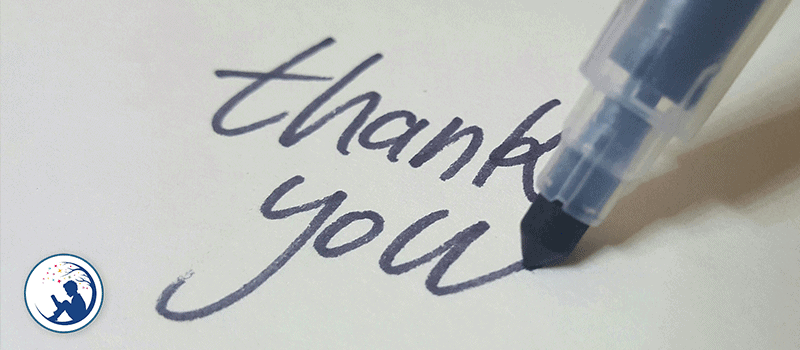Teaching your child how to write their name doesn’t just show your child how to scribe their moniker; it also helps to develop fine motor skills that will not only help them with writing but also a wide array of other tasks that involve their fingers and finger muscles as they develop.
The question is, how can you make learning to write their name as fun and enjoyable as possible? After all, we know that the key to early learning and development is to use fun games and activities to boost your child’s development without them really knowing that they’re learning; therefore, using the following games and activities can help your little one to learn to write their name quickly, effectively, and, most importantly, whilst have a ton of fun!
So, without further ado, let’s get stuck in!
The Five Best Activities To Help Your Child Learn To Write Their Name
Teaching your child to write their name doesn’t need to be complicated; in fact, the less complicated you make it, the easier it is for them – and who doesn’t like learning that’s easy?! Here are the best activities for name writing:
1 – Outline Their Name
Learning to write one’s name is certainly an accomplishment to be proud of and something that we use throughout our lives. However, it’s not the easiest thing to master, so you can make life a lot easier for your little one by printing their name as an outline for them to follow.
This can be done by hand or by using a word processing or graphics program. Whichever option you choose, ensure that the font is clear and large enough (it’s always better to start large and then work down to smaller writing).
Once your child has their pencil in hand, their aim is to stay between the lines and follow the patterns of each of the letters until eventually, they’ve traced their entire name.
If you want to get repeated use from a single print out, put a piece of clear plastic on top and use a felt-tip pen (or any other type of pen that can be rubbed off).
2 – Fingerpaint
Learning letters doesn’t just have to occur with pen in hand; in fact, learning to trace letter shapes and patterns with simply a finger can help to develop fine motor skills to an even greater degree. In reality, you can use absolutely anything as a writing tool – shaving cream, pudding, sand
salt…anything at all! Plus, they’re super fun to use, and your little one will love making a mess whilst learning!
If using sand or salt, make a layer of either material in a tray (so as to avoid spillage) and ask your child to use their fingers to draw the letters in their name. If using shaving foam or pudding, it’s likely to get a little messier, so be sure to have appropriate clothing and cleaning utensils to hand!
When using materials such as sand and shaving cream, don’t expect your child to write their name perfectly. Allow them to use their own creativity and acclimatise their fine motor skills in their own unique way. They’ll get there in the end…they just might make quite a lot of mess along the way!
3 – Chalk
When I was a kid, I loved chalk. I had a chalkboard in my room, but I’d often grab the chalk and take it with me wherever I went. Naturally, this resulted in me writing whenever and wherever I fancied, which often got me into trouble!
Encourage your child to use chalk to write on a chalkboard or any outdoor (or perhaps indoor) spaces that they’re allowed to use. Always begin by writing their name for them, then asking them to mimic your writing as best as they can, but a little smaller in size. As times goes on, you can gradually reduce the size of your writing, and they’ll do the same until eventually, they’re writing small enough to be able to scribe their name on regulation lined paper.
4 – Highlighter Tracing
Highlighter pens are another great tool for teaching your child how to write their name. Write your child’s name in large letters on a piece of paper (using a normal pen), then ask them to choose their favourite colour highlighter pen to trace over the top of your writing.
When doing this, always have a wide selection of colours to choose from as this will help to keep things fresh and make sure your child doesn’t become bored of using one colour.
5 – Dry Erase Board (also known as a Whiteboard)
Dry-erase boards (often called ‘whiteboards’ in the UK) are another fantastic tool – not only for name writing but writing in general. Why? Because they can be used over and over and over again without any waste! Plus, it can be used for many years for writing practice, sums, drawing, games, activities and everything else kids like to do!
Teaching Your Child How To Write Their Name: A Summary
Learning to write their name is an integral part of a child’s development; therefore, it’s essential to do all you can to help them learn this vital skill as soon as possible. While the majority of writing will take place at school, teaching your child how to write their name before they begin school is a sure-fire way to kick-start their writing development before their school journey proceeds.
While we acknowledge that the above five tips aren’t anything groundbreaking or capable of setting the learning-to-write-your-name world alight, they are simple, fun, and very effective ways to increase your child’s progress where name writing is concerned. Plus, it will translate perfectly over to normal, everyday writing – so it’s a win-win all around!
One thing it’s always important to remember is that every child learns and develops at a different rate, so if your little one appears to be struggling to write their name, be patient and continue to help them practice over and over again until they nail it!

